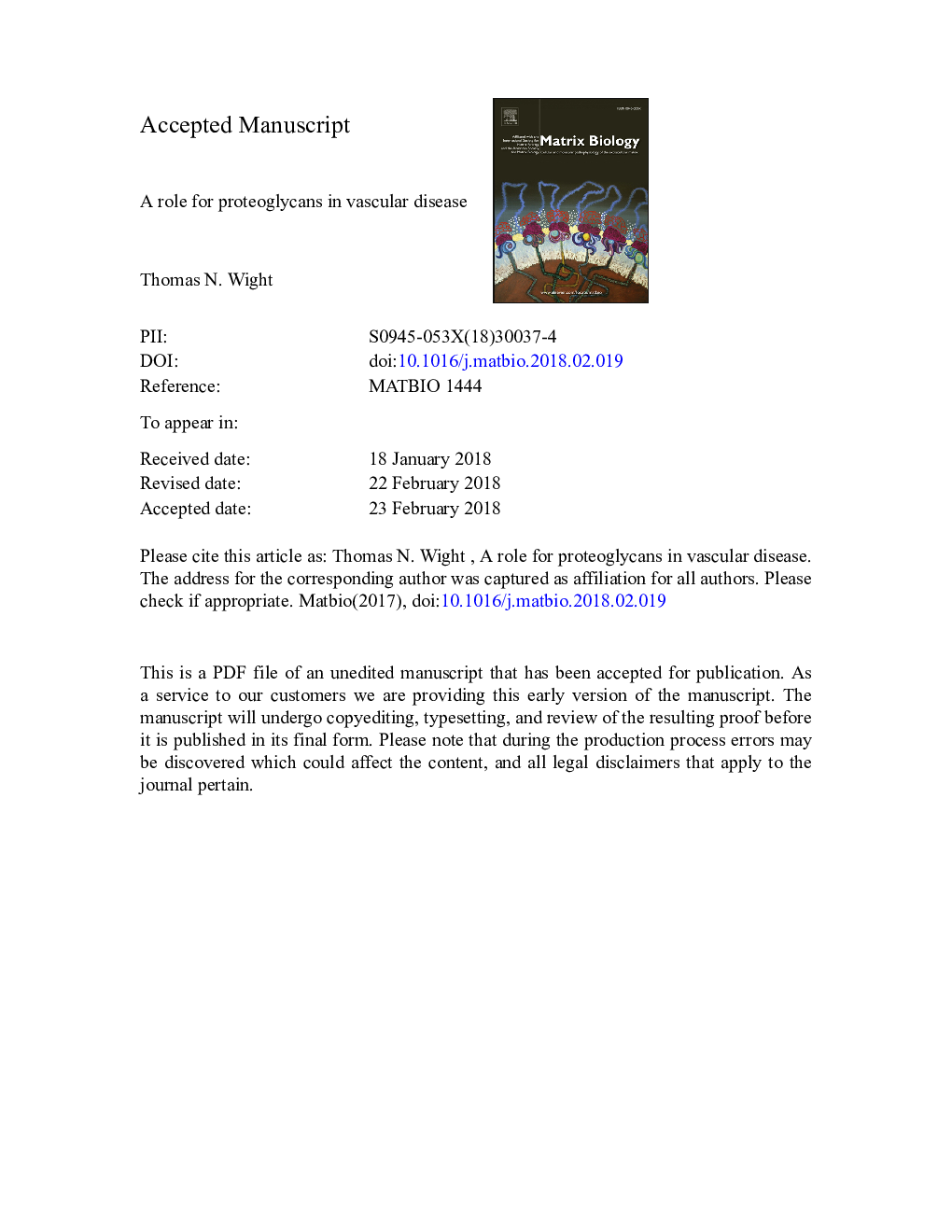| کد مقاله | کد نشریه | سال انتشار | مقاله انگلیسی | نسخه تمام متن |
|---|---|---|---|---|
| 10157713 | 1666475 | 2018 | 78 صفحه PDF | دانلود رایگان |
عنوان انگلیسی مقاله ISI
A role for proteoglycans in vascular disease
ترجمه فارسی عنوان
نقش پروتئگلیکان در بیماری های عروقی
دانلود مقاله + سفارش ترجمه
دانلود مقاله ISI انگلیسی
رایگان برای ایرانیان
کلمات کلیدی
موضوعات مرتبط
علوم زیستی و بیوفناوری
بیوشیمی، ژنتیک و زیست شناسی مولکولی
تحقیقات سرطان
چکیده انگلیسی
The content of proteoglycans (PGs) is low in the extracellular matrix (ECM) of vascular tissue, but increases dramatically in all phases of vascular disease. Early studies demonstrated that glycosaminoglycans (GAGs) including chondroitin sulfate (CS), dermatan sulfate (DS), keratan sulfate (KS) and heparan sulfate (HS) accumulate in vascular lesions in both humans and in animal models in areas of the vasculature that are susceptible to disease initiation (such as at branch points) and are frequently coincident with lipid deposits. Later studies showed the GAGs were covalently attached to specific types of core proteins that accumulate in vascular lesions. These molecules include versican (CSPG), biglycan and decorin (DS/CSPGs), lumican and fibromodulin (KSPGs) and perlecan (HSPG), although other types of PGs are present, but in lesser quantities. While the overall molecular design of these macromolecules is similar, there is tremendous structural diversity among the different PG families creating multiple forms that have selective roles in critical events that form the basis of vascular disease. PGs interact with a variety of different molecules involved in disease pathogenesis. For example, PGs bind and trap serum components that accumulate in vascular lesions such as lipoproteins, amyloid, calcium, and clotting factors. PGs interact with other ECM components and regulate, in part, ECM assembly and turnover. PGs interact with cells within the lesion and alter the phenotypes of both resident cells and cells that invade the lesion from the circulation. A number of therapeutic strategies have been developed to target specific PGs involved in key pathways that promote vascular disease. This review will provide a historical perspective of this field of research and then highlight some of the evidence that defines the involvement of PGs and their roles in the pathogenesis of vascular disease.
ناشر
Database: Elsevier - ScienceDirect (ساینس دایرکت)
Journal: Matrix Biology - Volumes 71â72, October 2018, Pages 396-420
Journal: Matrix Biology - Volumes 71â72, October 2018, Pages 396-420
نویسندگان
Thomas N. Wight,
